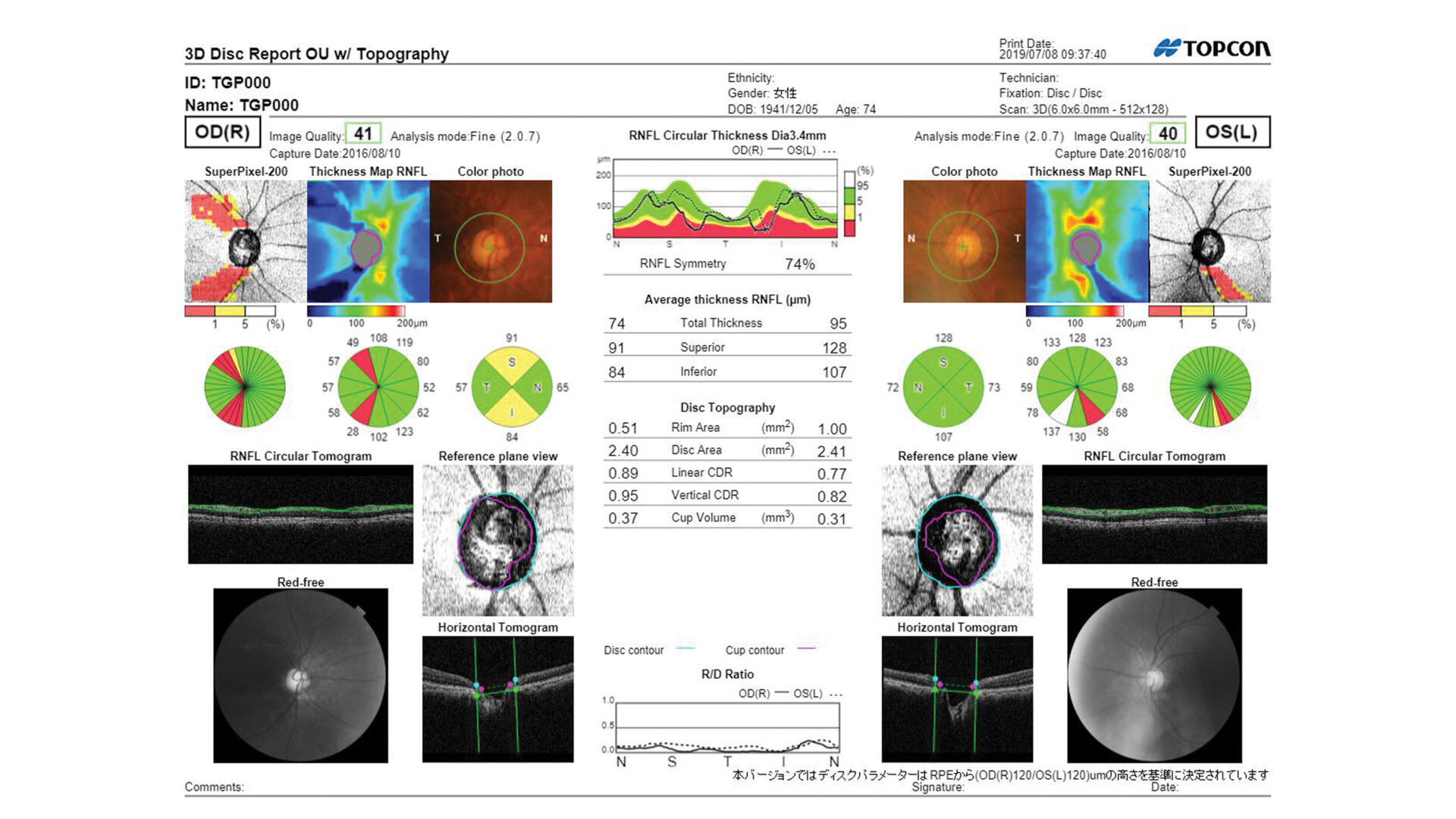O.C.T Advanced Eye Examination
O.C.T Advanced Eye Examination
What is O.C.T?
- Optical Coherence Tomography (O.C.T) will measure the eye, particularly the layers of the retina. The retina is the light sensitive area at the back of the eye, equivalent to film in a traditional camera.
- Three-dimensional O.C.T images allow optometrists to see problems within the eye that could not easily be identified before.
- Our new O.C.T system means that the latest advanced technology is available to protect your eyesight now and in the future
- The test is very simple, takes just a few seconds and is completely non-contact; there are no sudden puffs of air or light flashes. Any areas that may be unusual can then be measured; later repeat scans can be lined up with the original so that changes are measured.
What are the advantages of O.C.T?
- The retina can be damaged by glaucoma, diabetes, and age-related macular degeneration. This can lead to visual impairment or even blindness.
- O.C.T can pick up any problems at a much earlier stage, usually allowing you better treatment options and a better visual result.
What sort of illnesses are we talking here?
For conditions most of you have heard of like Glaucoma and Macula Degeneration, OCT scans are truly brilliant. But there are so many more conditions too which we can now detect, diagnose and monitor.
How it works:
A beam of light is directed into your eye.
The device measures how the light reflects off different layers of your retina.
It builds a 3D image of the retina, optic nerve, or macula, depending on what needs to be checked.
Interference:
The light waves are bounced off the tissue and the interference patterns are analysed to create an image.
High Resolution:
OCT provides a high-resolution, cross-sectional image of the back of the eye.
What OCT Can Detect:
OCT is commonly used to diagnose and monitor:
Macular degeneration (wet and dry)
Diabetic retinopathy
Glaucoma
Macular edema
Retinal detachment
Vitreomacular traction
Monitoring:
OCT can be used to monitor the progress of eye conditions over time and to assess the effectiveness of treatment.
Treatment Planning:
OCT provides valuable information for planning treatment strategies, such as surgery or medication.
Early Detection:
OCT can help detect eye conditions, like glaucoma, earlier than traditional methods.
Cost
Private and NHS patients can upgrade to have an O.C.T examination for only £45.
(You can’t have this test just on its own.)
So who would you recommend having it?
Anyone that wants to have the most detailed health check of their eyes.
However, if you’re over 50, have a family history of genetic eye conditions like Glaucoma and Macula Degeneration, you have a high prescription or suffer a sudden onset of blurred vision, I would say it’s almost essential.




International Eyewear
Ahlem
Caroline Abram
Barton Perreira
lunor
Oakley